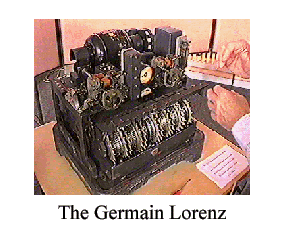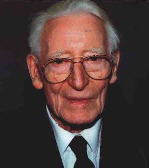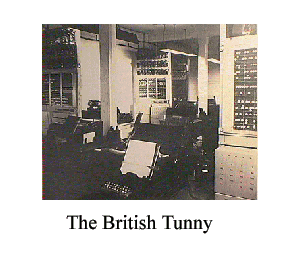Enigma, although probably the most famous, was by no means the only cypher to be broken at Bletchley Park. Lorenz was a highly sophisticated cypher used personally by Hitler and his High Command. As D-Day approached, breaking 'Tunny', as Lorenz was known, was to become increasingly important.
Colonel John Tiltman and Bill Tutte managed to work out how the Lorenz machine operated, despite the fact that no one at Bletchley Park had ever seen one.


